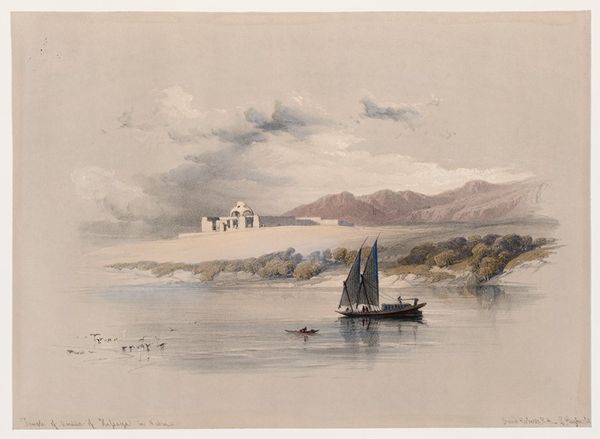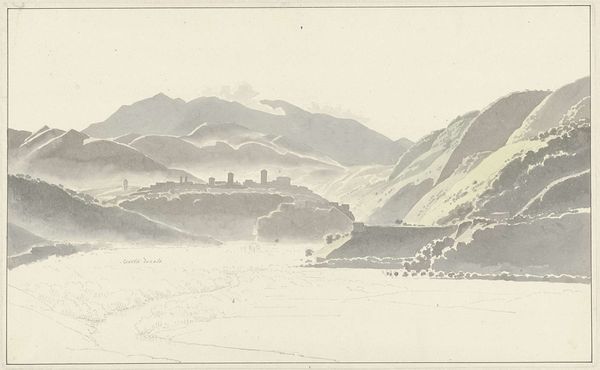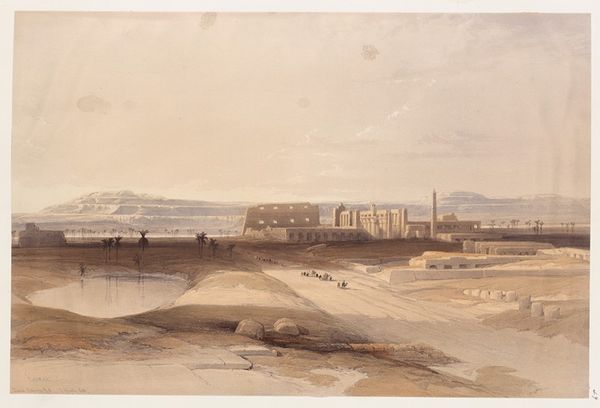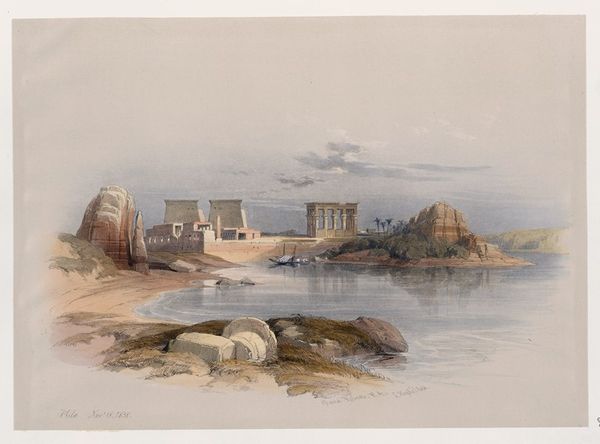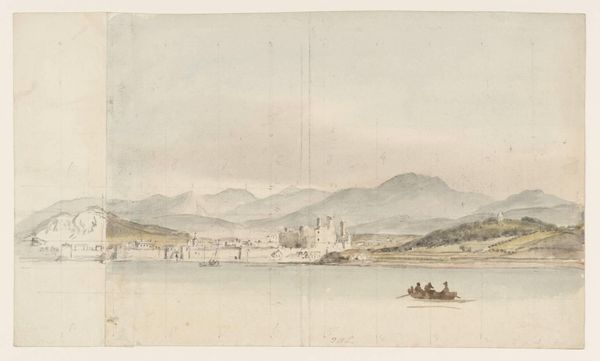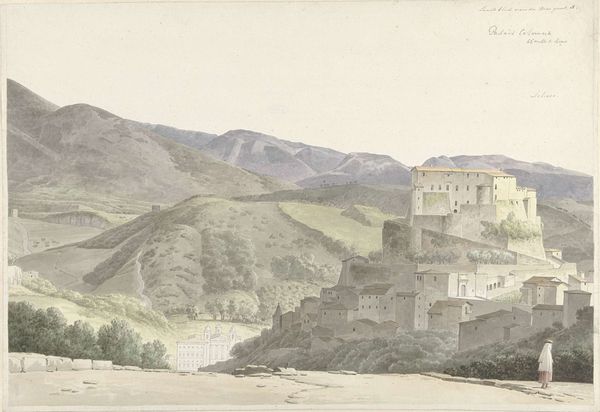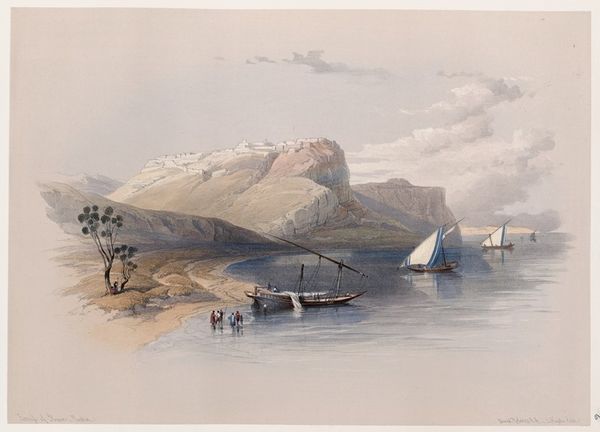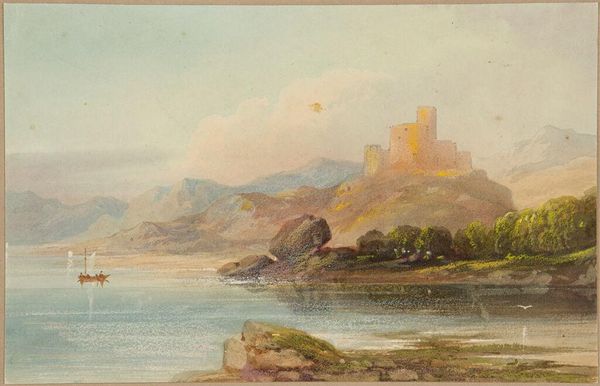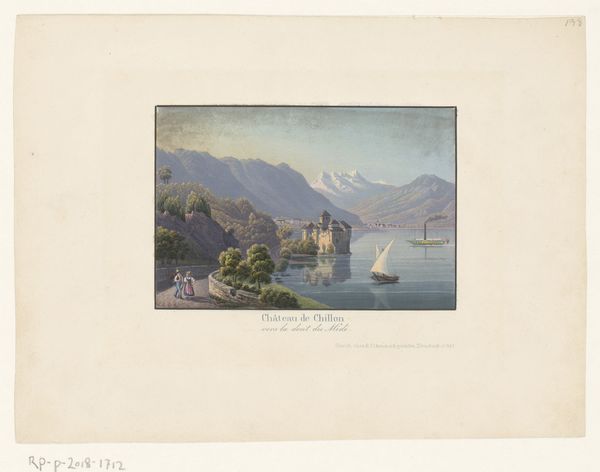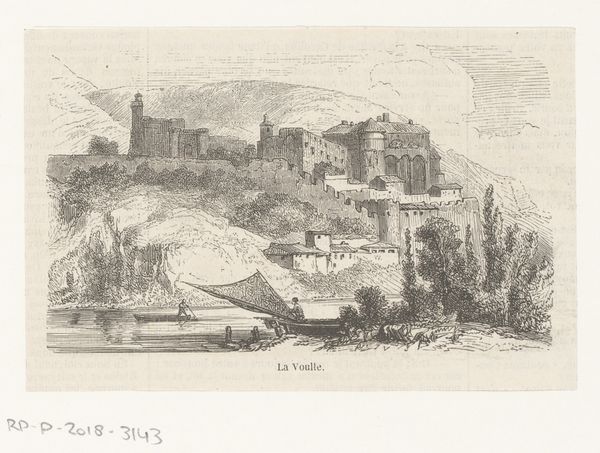![Temple of Kalabshee [Kalabsha, Kalâbishah], Nubia. Nov. 1838. by David Roberts](/_next/image?url=https%3A%2F%2Fd2w8kbdekdi1gv.cloudfront.net%2FeyJidWNrZXQiOiAiYXJ0ZXJhLWltYWdlcy1idWNrZXQiLCAia2V5IjogImFydHdvcmtzL2U5YWQ3M2Q5LThkZTQtNGIxMi04OGNlLTc0ODUyMjVmZWI3Mi9lOWFkNzNkOS04ZGU0LTRiMTItODhjZS03NDg1MjI1ZmViNzJfZnVsbC5qcGciLCAiZWRpdHMiOiB7InJlc2l6ZSI6IHsid2lkdGgiOiAxOTIwLCAiaGVpZ2h0IjogMTkyMCwgImZpdCI6ICJpbnNpZGUifX19&w=1920&q=75)
watercolor
#
landscape
#
ancient-egyptian-art
#
watercolor
#
ancient-mediterranean
#
romanticism
#
cityscape
#
history-painting
#
watercolor
Copyright: Public Domain: Artvee
In November 1838, David Roberts created this watercolor of the Temple of Kalabshee in Nubia, now modern-day Egypt. The image captures a moment in the burgeoning era of archaeological tourism, reflecting European interests in ancient cultures. Roberts' depiction uses visual codes associated with the picturesque style, framing the temple within a broader landscape. This approach created a sense of romanticism and adventure, appealing to the sensibilities of the time. The lithograph served not only as a record but also as a cultural artifact, shaping European perceptions of Egypt. During this period the British Empire and the French, in particular, fostered a fascination with Egyptian antiquity. The lithograph was made at a time when access to such sites was expanding, turning cultural heritage into a spectacle for European consumption. The act of drawing and reproducing images of monuments like the Temple of Kalabshee was part of a broader colonial project. Further research into travel accounts, colonial records, and art market data would give more context to the work. The art reflects a specific moment in history.
Comments
No comments
Be the first to comment and join the conversation on the ultimate creative platform.
